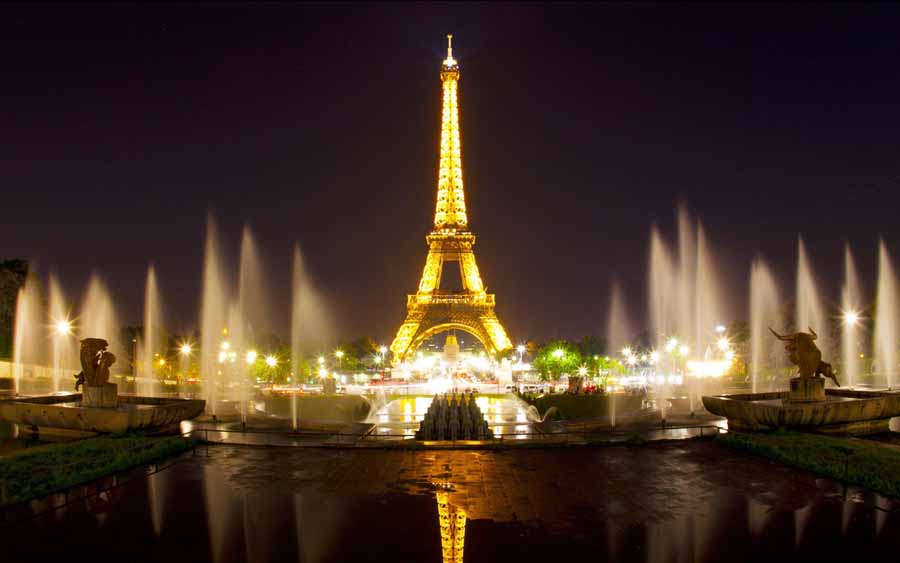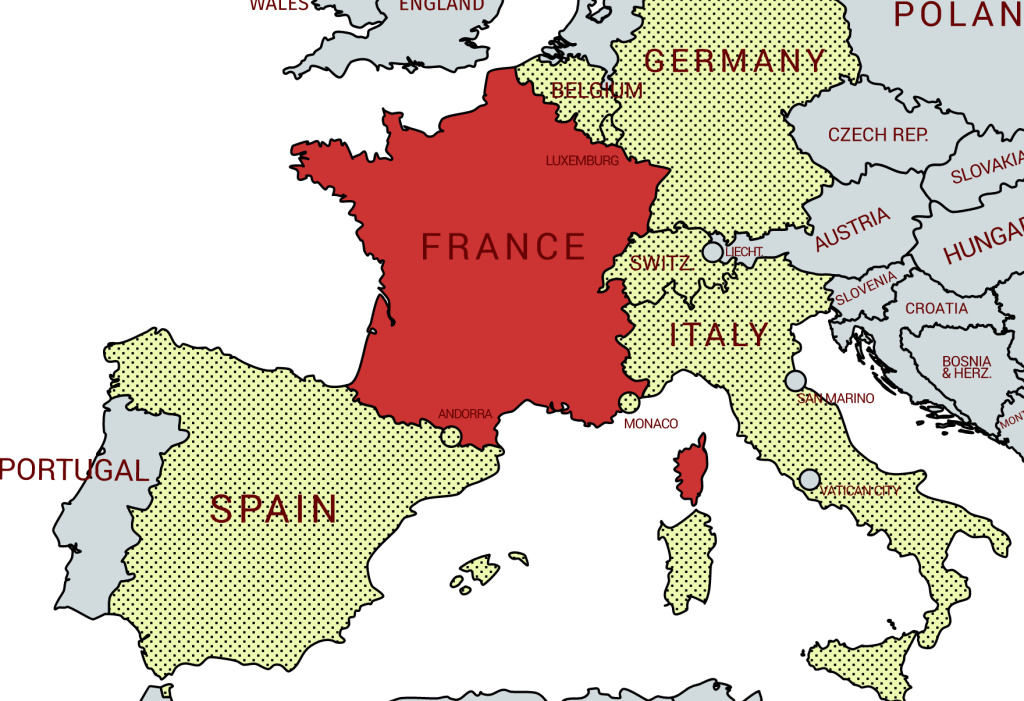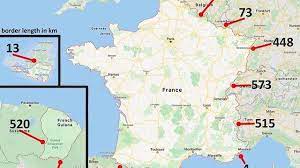France’s borders hold immense historical, cultural, and geopolitical significance. As a central European nation, France shares borders with several countries, including Belgium, Luxembourg, Germany, Switzerland, Italy, Monaco, Spain, and Andorra. These borders not only reflect its geographic diversity but also represent a crucial part of its identity.
France’s boundaries have witnessed countless historical events, from conflicts to alliances, shaping its rich heritage. Additionally, these borders facilitate economic and cultural exchanges, fostering collaboration and cooperation among neighboring nations. France’s proximity to various countries underscores its role as a pivotal player in European politics, trade, and diplomacy, making its borders a symbol of unity and connectivity in the heart of Europe.
here’s a table listing the countries that share a border with France and the approximate length of each border:
| Country | Length of Border (Approximate) |
|---|---|
| Belgium | 556 kilometers (346 miles) |
| Luxembourg | 73 kilometers (45 miles) |
| Germany | 451 kilometers (280 miles) |
| Switzerland | 573 kilometers (356 miles) |
| Italy | 488 kilometers (303 miles) |
| Monaco | 4.4 kilometers (2.7 miles) |
| Spain | 623 kilometers (387 miles) |
| Andorra | 57 kilometers (35 miles) |
Here are brief descriptions of each of the countries that share a border with France
Belgium
Belgium is known for its medieval towns, Renaissance architecture, and as the headquarters of the European Union. It’s famous for its chocolates, waffles, and beer.
Luxembourg
Luxembourg is a small, landlocked country with a strong economy. It’s known for its stunning landscapes, historic castles, and a blend of French and German influences.
Germany
Germany is a European powerhouse known for its industrial prowess, rich history, and cultural heritage. It offers diverse landscapes, from the Bavarian Alps to bustling cities like Berlin.
Switzerland
Switzerland is renowned for its stunning Alpine scenery, precision engineering (including watches), and a reputation for political neutrality. It’s a hub for winter sports enthusiasts.
Italy
Italy is famous for its art, history, fashion, and cuisine. It’s home to iconic landmarks like the Colosseum, the Leaning Tower of Pisa, and cities like Rome, Florence, and Venice.
Monaco
Monaco is a tiny, independent city-state on the French Riviera. It’s known for its glamorous casinos, luxury yachts, and as a tax haven for the wealthy.
Spain
Spain is known for its vibrant culture, flamenco music, bullfighting, and beautiful beaches. It boasts diverse regions, from the lively cities of Madrid and Barcelona to the historic Andalusian cities of Seville and Granada.
Andorra
Andorra is a small, mountainous country known for its ski resorts and tax-free shopping. It’s nestled in the Pyrenees Mountains between France and Spain.
FAQs
Q : Why does France have such diverse borders?
France’s diverse borders are the result of historical developments, including wars, treaties, and territorial acquisitions over centuries.
Q : Which country has the longest border with France?
Spain shares the longest border with France, with a length of approximately 623 kilometers (about 387 miles).
Q : What is the total length of France’s border with its neighboring countries?
The total length of France’s borders with its neighboring countries is approximately 4,059 kilometers (about 2,523 miles).
Q : Are there any border-related disputes between France and its neighbors?
There were no major border-related disputes between France and its neighboring countries. However, international borders are subject to occasional diplomatic discussions and agreements.
Also See :




Excellent site. Plenty of useful information here.
I am sending it to several pals ans additionally sharing in delicious.
And certainly, thank you for your effort!